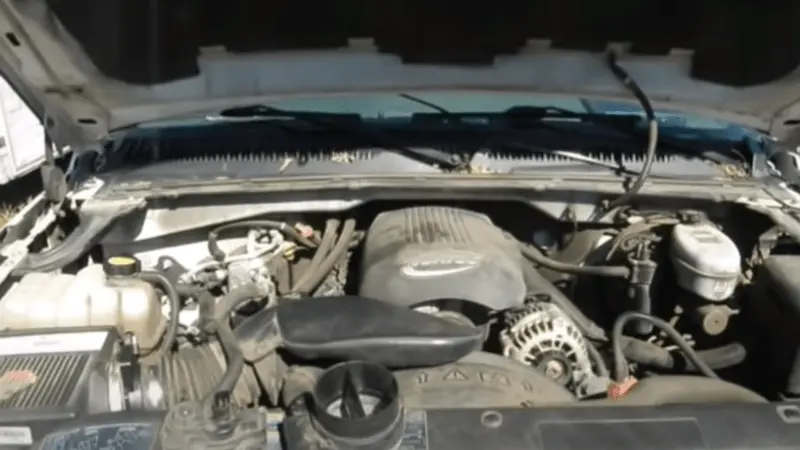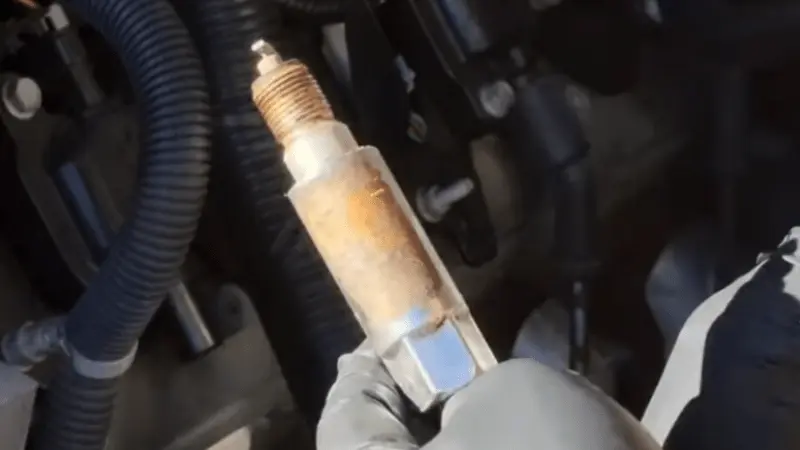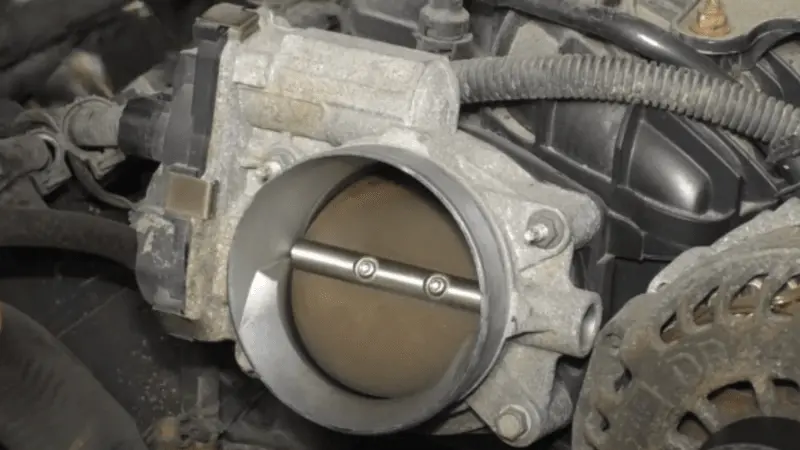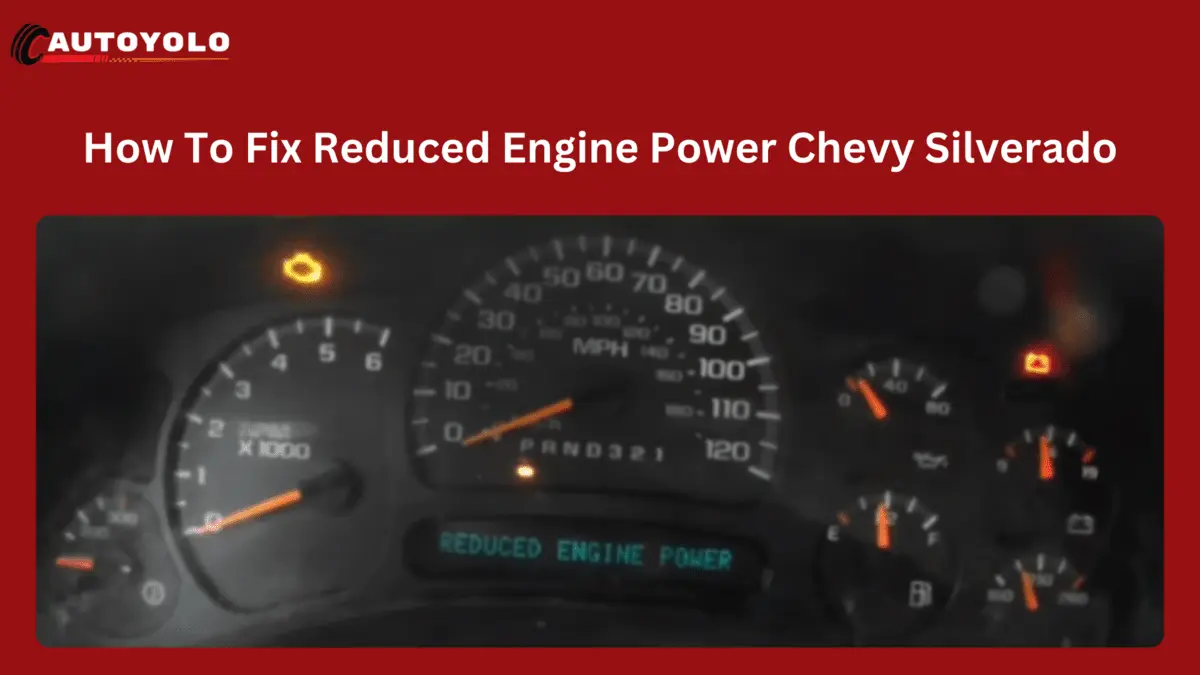Experiencing the “Reduced Engine Power” warning on your Chevy Silverado can be an unsettling moment for any driver. It signals something is amiss under the hood, and your truck’s performance may be compromised. However, understanding what this warning means and how to address it can empower you to regain complete control of your Silverado’s power and performance.
In this comprehensive guide, we delve into the intricacies of fixing reduced engine power issues in your Chevy Silverado. We’ll explore the common causes behind this warning, step-by-step diagnostics, and practical solutions that you can undertake, whether you’re a seasoned DIY enthusiast or seeking professional guidance. Get ready to uncover the keys to reviving your Silverado’s full potential and ensuring it runs smoothly and efficiently.
What Does It Mean If the Engine Has Reduced Power?
When your vehicle displays the “Reduced Engine Power” message, it typically means its performance has been intentionally restricted. This warning indicates that the vehicle’s primary computer, the powertrain control module (PCM), has detected a system issue or reduced engine performance. In response to this issue, the check engine light may also illuminate. To understand the specific implications of the “Engine Power Reduced” notification for your vehicle, consult your General Motors car’s manual, which is available for various models such as Chevy and Buick. The manual, especially the instrument cluster section, can provide insights into what actions or adjustments are needed for your specific model year and trim level.
RELATED: Chevy Equinox Service Stabilitrak Engine Power Reduced: Reasons & Solutions
Why Is My Chevy Silverado Losing Power?

If you’ve noticed that your Chevy Silverado is losing power, it can be a frustrating experience, especially given its reputation for quality and dependability. However, like any vehicle, even the most well-maintained Silverados can encounter issues. If you’re asking, “Why is my Chevy Silverado losing power?” there are several potential reasons to consider:
- Throttle Body Issues: One common reason for a sudden loss of power in your GM vehicle, including the Silverado, is problems with the throttle body. This issue may lead to intermittent acceleration loss and trigger a low engine power warning. While not a frequent occurrence, it can happen from once a day to multiple times daily. A computerized diagnostic will typically reveal a problem with the throttle body, indicating it’s time for a replacement.
- Fuel Delivery Problems: A faulty fuel pump or clogged fuel filter can restrict fuel flow to the engine, leading to decreased power. Inadequate fuel supply can result in poor engine performance, including acceleration issues.
- Air Intake Issues: Problems with the air intake system, such as a clogged air filter or a malfunctioning mass airflow sensor, can impact the engine’s air-to-fuel ratio, affecting power output and efficiency.
- Exhaust System Concerns: A clogged catalytic converter or exhaust restriction can hinder the efficient exit of exhaust gases, reducing engine power.
- Ignition System Malfunctions: Issues with spark plugs, ignition coils, or ignition timing can lead to misfires and a loss of power. The engine may not be operating at its peak performance.
- Sensors and Computer Errors: Modern vehicles use numerous sensors and the engine control module (ECM) to optimize performance. Sensor malfunctions or ECM errors can result in reduced power and performance problems.
- Transmission Problems: A slipping or malfunctioning transmission can lead to power loss, as the engine’s output doesn’t effectively transfer to the wheels.
- Excessive Engine Load: Overloading your Silverado beyond its capacity or towing heavy loads can cause power loss, as the engine needs help to cope with the extra weight.
How To Fix Reduced Engine Power Chevy Silverado?
When your Chevrolet Silverado experiences reduced engine power, it can be frustrating and concerning. A sudden loss of power in your truck can affect its performance, efficiency, and safety. You may have encountered the “Reduced Engine Power” warning on your Silverado’s dashboard, wondering how to resolve it. Various factors can cause this warning, and in this guide, we’ll explore common causes and practical solutions to fix reduced engine power in your Chevy Silverado.
1. Spark Plug Replacement:

– Cause: Worn-out spark plugs can lead to inefficient combustion, reducing power.
– Solution: Regularly inspect and replace spark plugs when they show signs of wear. Properly gapped and functioning spark plugs are essential for ignition.
2. Throttle Body Maintenance:

– Cause: A malfunctioning throttle body can impact engine performance, reducing power.
– Solution: Clean or replace the throttle body to ensure it functions properly. A clean throttle body allows for better air and fuel mixture regulation.
3. PCM System Evaluation:
– Cause: A malfunctioning powertrain control module (PCM) can lead to inaccurate data from engine sensors, causing reduced performance.
– Solution: Have the PCM diagnosed and, if necessary, replaced by a qualified technician to ensure it accurately regulates engine functions.
4. Fuel Pump Inspection:
– Cause: A failing fuel pump results in inadequate fuel delivery, causing power loss and potential starting issues.
– Solution: Address fuel pump issues promptly. Ensure that the fuel pump is operating correctly to maintain proper fuel flow.
5. Speed Sensor Examination:
– Cause: In automatic transmissions, a faulty speed sensor can lead to improper gearbox settings, resulting in decreased engine power.
– Solution: Inspect and replace the speed sensor if needed, ensuring proper communication between the transmission and engine.
6. Mass Airflow Sensor Check:
– Cause: Inadequate airflow due to a malfunctioning mass airflow sensor can reduce engine power.
– Solution: Inspect and, if necessary, replace the mass airflow sensor to maintain the proper air-to-fuel ratio and ensure efficient engine performance.
7. Wiring System Inspection:
– Cause: Damaged wiring can disrupt electrical connections, leading to decreased engine power.
– Solution: Carefully examine the electrical system and replace damaged wires to ensure seamless electrical flow.
8. Cooling System Maintenance:
– Cause: Engine overheating due to cooling system issues can lead to efficiency loss and reduced power.
– Solution: Ensure the radiator is clear and coolant levels are adequate. Replace or clean the radiator if necessary to prevent overheating.
9. Fuel Filter Replacement:
– Cause: A clogged fuel filter restricts fuel flow, impacting engine power.
– Solution: Regularly replace the fuel filter to ensure efficient fuel delivery and maintain engine performance.
10. Catalytic Converter Inspection:
– Cause: A blocked catalytic converter hinders the passage of exhaust gases, reducing engine power.
– Solution: Examine and replace the catalytic converter if it’s found to be blocked.
11. Battery and Electrical System Check:
– Cause: Weak or corroded battery connections can lead to electrical issues and power loss.
– Solution: Check the battery’s voltage, cables, and terminals. Ensure a robust and corrosion-free connection for optimal electrical supply.
12. Timing Belt Evaluation:
– Cause: Timing belt failure (if your vehicle uses a belt instead of a chain) can lead to improper valve timing, causing engine malfunctions and power loss.
– Solution: Regularly inspect and replace the timing belt to maintain proper valve and piston synchronization.
13. Pedal Position Sensor and Oxygen Sensor Examination:
– Cause: A faulty pedal position or oxygen sensor can lead to improper fuel and air mixture regulation, affecting engine performance.
– Solution: Check for codes using diagnostic tools to identify issues with these sensors. Replace them if necessary.
14. Exhaust Gas Recirculation (EGR) Valve Inspection:
– Cause: A malfunctioning EGR valve can result in the engine running too lean, reducing power.
– Solution: Clean or replace the EGR valve to ensure it functions correctly and maintains the air-to-fuel ratio.
RELATED: How To Fix Engine Power Reduced Chevy Equinox
FAQs
1. What Should I Do If I See The “Reduced Engine Power” Warning On My Chevy Silverado’s Dashboard?
When you encounter this warning, it’s essential to address the issue promptly. Check for common causes like faulty sensors, clogged filters, or electrical problems. If you can’t identify the problem, consult a qualified mechanic or dealership for a thorough diagnosis.
2. Can I Continue Driving My Silverado When It’s In “Reduced Engine Power” Mode?
Yes, you can drive your Silverado in this mode, but with reduced power and performance. It’s designed to allow you to reach a service facility safely. Avoid heavy acceleration and high speeds. Once the underlying issue is resolved, the warning should clear.
3. Is It Possible To Fix “Reduced Engine Power” Issues Without Professional Help?
Some basic maintenance tasks, like changing spark plugs or inspecting air filters, can be done by DIY enthusiasts. However, complex issues, sensor replacements, or electronic diagnostics often require professional expertise.
4. How Much Does It Typically Cost To Fix “Reduced Engine Power” Problems In A Silverado?
The cost varies widely depending on the specific issue and its complexity. Minor maintenance tasks may cost a few hundred dollars, while extensive repairs involving sensor replacements or engine diagnostics can be more costly.
5. How Can I Prevent “Reduced Engine Power” Issues In My Chevy Silverado?
Regular maintenance, including timely oil changes, air filter replacements, and monitoring of the vehicle’s sensors, can help prevent such issues. Ensuring your vehicle’s electrical and fuel systems are in good condition can also minimize the risk of reduced engine power.
Final Discussion
In automotive troubleshooting, understanding and addressing “Reduced Engine Power” in your Chevy Silverado is paramount. It’s not just about maintaining performance; it’s about ensuring the safety and reliability of your vehicle. With this guide, you’ve explored the potential culprits behind this warning and learned the steps to resolve them. Whether changing spark plugs, cleaning sensors, or seeking professional help for complex diagnostics, you’ve got the tools to get your Silverado back on the road at its best. Remember, regular maintenance and attentiveness to your vehicle’s needs can go a long way in preventing such issues. So, embrace the power to keep your Silverado running strong and confidently drive, knowing you can tackle “Reduced Engine Power” head-on.

Eric L. Friedman is a car expert who has worked on Chevy and GMC trucks for over 10 years. He started AutoYolo to help people fix their own cars. On the blog, he shares easy tips, step-by-step guides, and repair advice to make car problems less stressful and more affordable.

